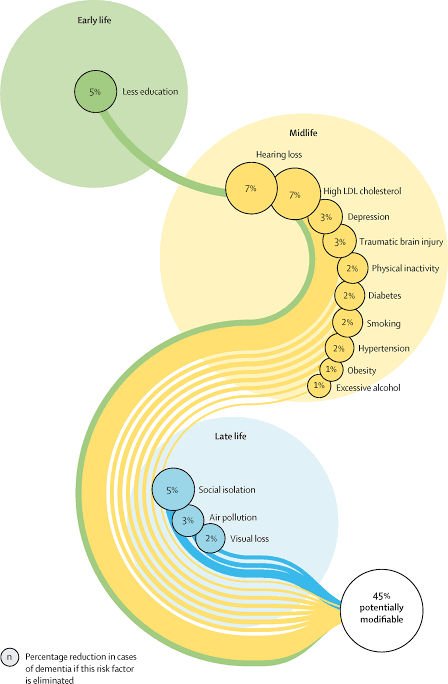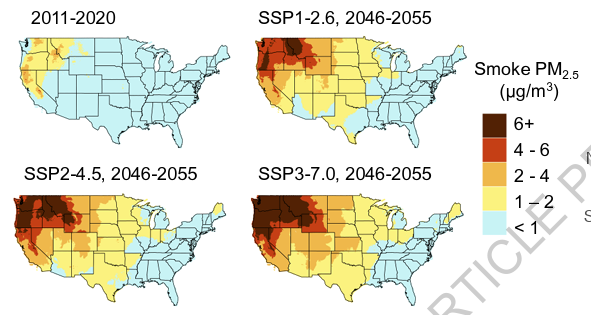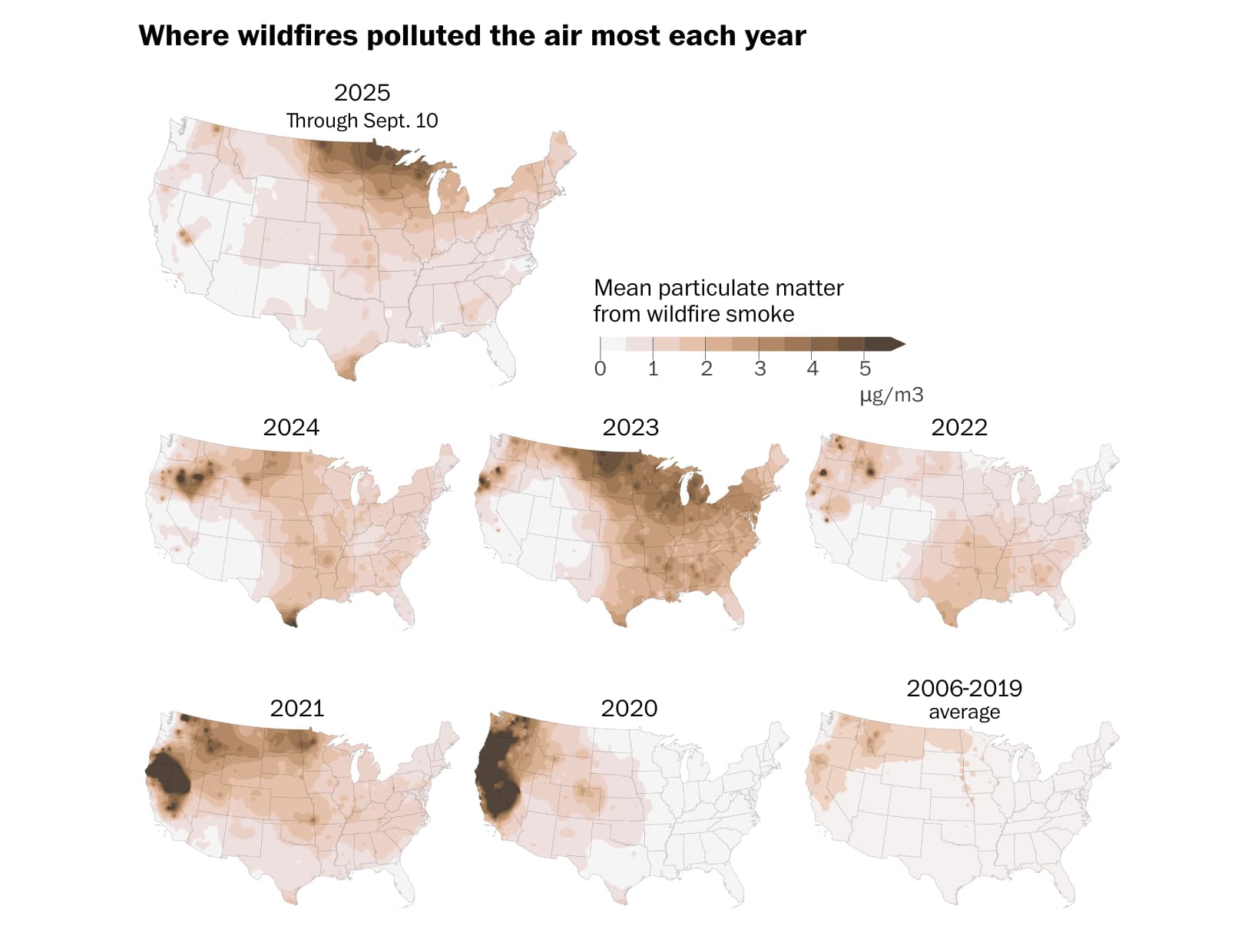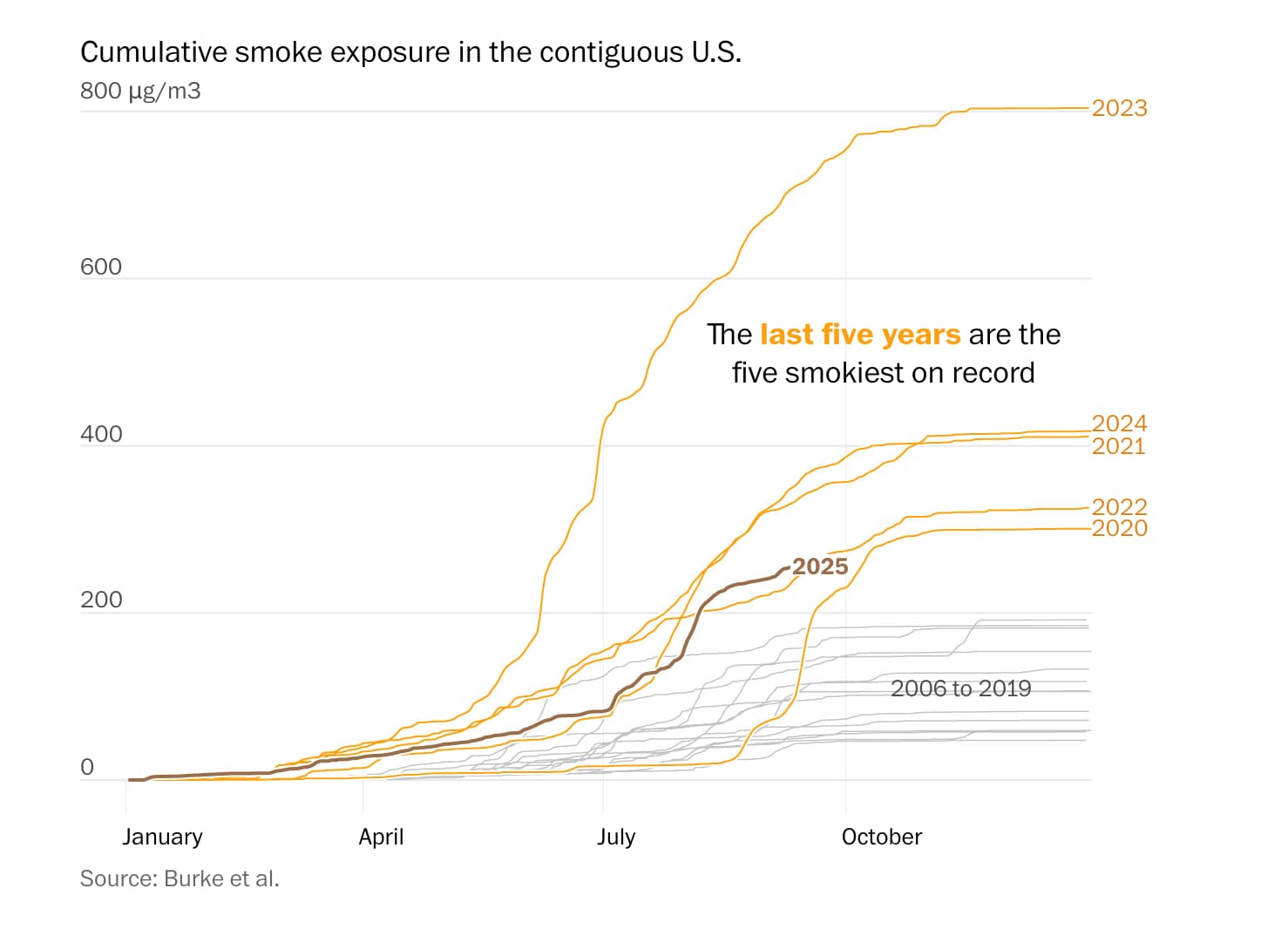There are so many issues and health hazards in these areas that I have to believe it would be very hard to parse out the different cause/effect relationships with a given person’s mortality. Poverty, noise, toxins, stress, extreme heat, getting hit by an auto-rickshaw at high speeds… the list goes on.
OK, but China has statistics. Are the rates of PD and AD higher in Beijing than some smaller cities with better AQI? Or for that matter Los Angeles, CA famous for terrible air quality for literally decades.
Of all places and times in history, Parkinson’s disease was first described and discovered in 1817 in London when the fog started with industrialization.
Air pollution improved in the West over the past decades and AD age-adjusted prevalence is decreasing as well.
The Lancet commission on dementia prevention considers that 1% of cases are due to air pollution.
We have longitudinal studies (above + https://www.thelancet.com/journals/lanplh/article/PIIS2542-5196(25)00118-4/fulltext ) , mechanistic studies and animal models ( Air pollution and the effects on health - #42 by adssx ) and Mendelian randomization (although I find an MR for that very very weird but ChatGPT tells me it makes sense ![]() https://www.sciencedirect.com/science/article/pii/S1309104225002004 ). What else would you like to see?
https://www.sciencedirect.com/science/article/pii/S1309104225002004 ). What else would you like to see?
Again, I don’t doubt that air pollution increases the rates of PD, AD and cancer. But it’s a minor contributing factor. What I would like, is an explanation, of why for example the “PD belt” does not coincide with the most air polluted areas. The point is that the likely reason is that the polluted air is minor compared to some other factors which occur in the “PD belt”. Air pollution is a factor, but a minor factor compared to other pollutants (for example in rural areas).
The answer to your question is in this sentence.
Oops it’s 3%:

Source: https://www.thelancet.com/journals/lancet/article/PIIS0140-6736(24)01296-0/abstract
And sorry for the triple post but you’re asking about PD even though the above articles are about AD and LBD/PDD. I don’t know if we have that strong evidence for PD itself. For PD we have more evidence for chemicals, heavy metals and pesticides, which might explain the PD belt: Mystery of America’s ‘Parkinson’s Belt’ Where Chemicals ‘Are · Parkinson's Resource Organization
See where wildfire smoke is getting worse in the U.S.
A new study shows wildfires are causing more than 40,000 premature deaths per year — and that rising temperatures will lead to even more.
Read full story: See where wildfire smoke is getting worse in the U.S. (WaPo)
Think about where you want to live over the next 50 years:
A paper covering the trends for the future:

Global warming amplifies wildfire health burden and reshapes inequality
Global warming intensifies wildfires and exacerbates greenhouse gas and pollutant emissions1. However, global projections remain incomplete, hindering effective policy interventions amid uncertain warming futures2. Here, we developed an interpretable machine learning framework to project global burned areas and wildfire emissions. This framework accounts for the impacts of future climate change on fire activity and quantifies associated premature deaths and radiative forcing from fire-induced particulate matter (PM2.5). Here we show that from 2010–2014 to 2095–2099, fire carbon emissions are projected to increase by 23% under the Shared Socioeconomic Pathway (SSP) 2-4.5. Increased fire-related aerosols reduce the 0.06 W m⁻² cooling effect north of 60°N. Projections show a surge in premature deaths from wildfire smoke, reaching 1.40 (95% Confidence Interval: 0.66–2.25) million annually during 2095–2099, roughly 6 times higher than current levels. Africa is projected to experience the greatest rise in fire-related deaths (11-fold), driven by emission changes and an aging population. Europe and the U.S. would experience a 1–2-fold increase under SSP2-4.5, linked to rising fire occurrences in the mid-latitude Northern Hemisphere. Overall, the health burden would become more evenly distributed across nations of differing development levels than present patterns, underscoring the need for coordinated efforts.
That Dirty Air? It May Worsen Alzheimer’s and Lewy Body Pathology
Polluted air leaves its mark on the brain. In the September 8 JAMA Neurology, Edward Lee and colleagues at the University of Pennsylvania, Philadelphia, report that two decades of autopsies reveal a pattern: People who lived amid higher levels of fine-particle pollution died with a heavier load of plaques and tangles. The paper appeared shortly after one in the September 4 Science tied air pollution to risk of Lewy body dementia. The authors, led by Xiao Wu of Columbia University, New York, with Ted Dawson, Shizhong Han, and Xiaobo Mao at Johns Hopkins, Baltimore, went beyond epidemiology, reporting that fine particulate matter itself can cause α-synuclein to assemble into pathogenic fibrils. Together, the two papers strengthen the evidence linking pollution to pathology.
The solution is quite simple: The 8 Best Air Purifiers of 2025 | Reviews by Wirecutter
Don’t go hiking in an area with high air pollution. Use a car with a HEPA filter. Measure.
I’m really surprised to see Britain’s air rated as so clean… . London’s air, in particular, still has way higher PM2.5 levels than most American cities (I’ve tested it)…
==
Hm so when I was high (on just caffeine) i impulsively posted Portugal’s air as being 3rd cleanest in europe [though you have to count out iceland which doesn’t 100% count]. This claim was almost right in 2022 and right in 2021… (only beaten by sweden and finland that year)… not as much in 2023.
[2021 was the peak year of my life so naturally ALL my references come from that year[
London looks identical to NYC: World's Most Polluted Countries in 2024 - PM2.5 Ranking | IQAir
Of course, pollution is highly local. Overall, I found the air in London very clean (I measure), with the exception of the Tube…
Thx for the link. I’ll plan to buy a couple more for the house, so I’ll add some of these to my cart to compare sale prices for Amazon Prime day Oct 7.
You know what’s crazy? It’s that not just air pollution that kills people at scale. But bizarrely, the biggest killer is hurricanes - not directly but indirectly through other mechanisms. This is so weird, but true, it even explains many regional lifespan discrepancies as in the Southeast including affecting newborns a decade before they are born.
Did Scientists Just Figure Out Why People Die A DECADE Earlier in the Southeast US? (PBS Terra)
Not sure if I buy that. Here in Hong Kong, we experience numerous typhoons (there’s a super typhoon tomorrow, which is closing work and school for two days!). Yet we have one of the highest life expectancies anywhere.
I haven’t watched the video, but I’m not sure if I think inclement weather causes people to die earlier unless it unleashes some kind of bacteriological disaster.
Exposure to ambient air pollution and onset of Parkinson’s disease in a large cohort study 2025
Overall, no significant associations were found between PM2.5, NO2 exposure, and PD onset for this cohort, or in males, females, and those aged 50+ years. However, we found some evidence of a statistically significant association between air pollution exposure and PD onset, using our prescriptions-based proxy, among under-50s. In the absence of alternative measures of PD onset for this cohort, it remains unclear how to interpret this estimated association.



